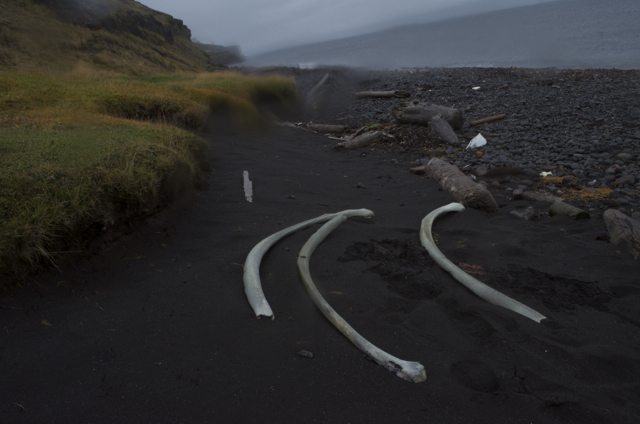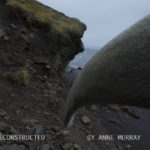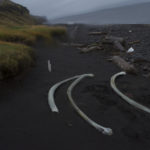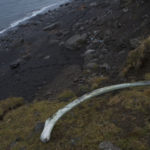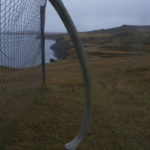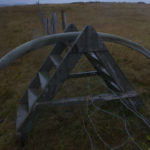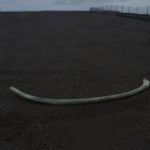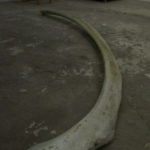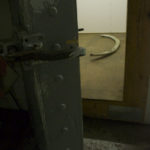Hvalreki (now memory reconstructed) by Anne Murray
The title of the project, Hvalreki,(renamed, memory reconstructed), means when you encounter, by chance, a whale washed up on shore, in the Icelandic language; it is used colloquially to mean good luck, because when your family is starving and you encounter a whale on the beach, it is exceptional good luck.
When I found the whalebone, it was amongst a few others. It was raining. I picked it up, it was heavy and it swayed as I walked because of the torsion in its structure. I carried it in my left hand at first and then I hoisted it up to my right shoulder finding it easier to manage this way. I was able to use my right hand to hold it fixed on my shoulder and my left to keep it from swaying too much as I walked on the black sand. With the bone on my shoulder, I imagined myself as an immense whale navigating the ocean.
As I carried the bone, I came upon an old vehicle, just a rusted frame and tires on the beach. I placed the bone upon it to get a sense of it in space, I could see it better this way, how it curved, how the light caught it and the contrast in the green, gray and white of the bone with the deep dark rusted metal of the vehicle. The green and grey tones were formed from nature attempting to inhabit the bone, moss and sand dyeing its surface. Next, I had to climb the small cliff. I placed the bone on the edge of the cliff. I kept walking and tried to create an arch with the bone by wedging it in a crack in the soil, it kept falling down. I leaned it against the fence, forming an arch to look back at the beach in the distance, it was beautiful to see it there, but I preferred it against the cliff edge. Next, I placed it on a small ladder, balanced and crossing the fence on both sides. Then, I placed it on the road, this connected well to its origin, the same volcanic sand used to create the pavement mixed with tar, had rippling patterns that echoed the shape of the bone. Finally, I arrived on foot back at Fjuk Art Centre, where I am an artist-in-residence. I placed the bone in the studio on the concrete floor. The texture and the colors were similar on the concrete floor to the bone. Within the studio there is a room that no one uses that used to be an old freezer for the fishery here. I placed the bone inside and took a photo.
As I worked on this piece it evolved and so did my consciousness about public art. At first, I thought that I would just take two pictures, one in situ and the other displaced. Along the way, I took many pictures and realized that the action of moving the bone was becoming more important than the end result, but that the photos were becoming an independent history of the event, manipulating the viewer into seeing only what I chose to document. I thought about the ancient people here, discovering a beached whale by chance, that could feed many and would help them get through a winter with its harvest. I went to the Husavik Museum here and I learned more about how people were able to survive in the past hundred years, sharing the rights to these beached whales with many other people, so they wouldn’t starve. At the local pub, I talked to Icelanders about the modern whaling industry as well as other foreigners like myself. I read about the policies of the International Whaling Commission and the scientific whaling that was done to enable continued killing of whales even when it was banned or limited to kill whales in and around Iceland. I was greatly moved by this art piece; I was the one who changed my awareness of the subject matter, a metacognition.
As a performance, it relates to Alys’ work, The Green Line, where he used paint to mark the borders. I created a line between the beach and the freezer where whale meat once ended up. It also relates to Adrian Piper and her use of bad smells to get a reaction, the texture and painful weight of the whalebone on my shoulder acting upon me as a bad smell on the public, a physical effect on the viewer/participant. My work’s relationship to placement and experimentation in nature is like Smithson, but ends up being more ephemeral like Andy Goldsworthy.

